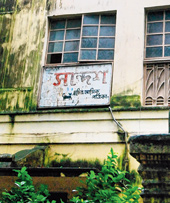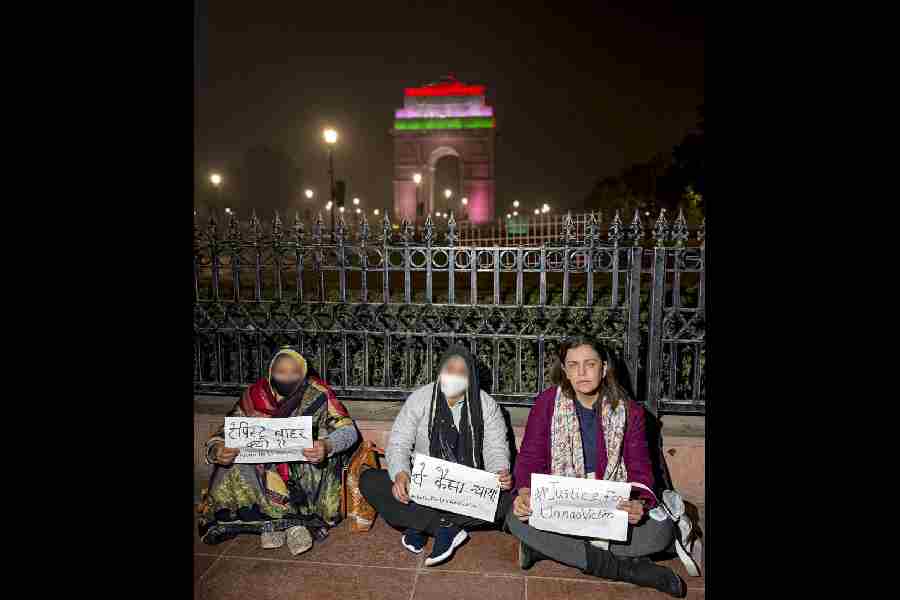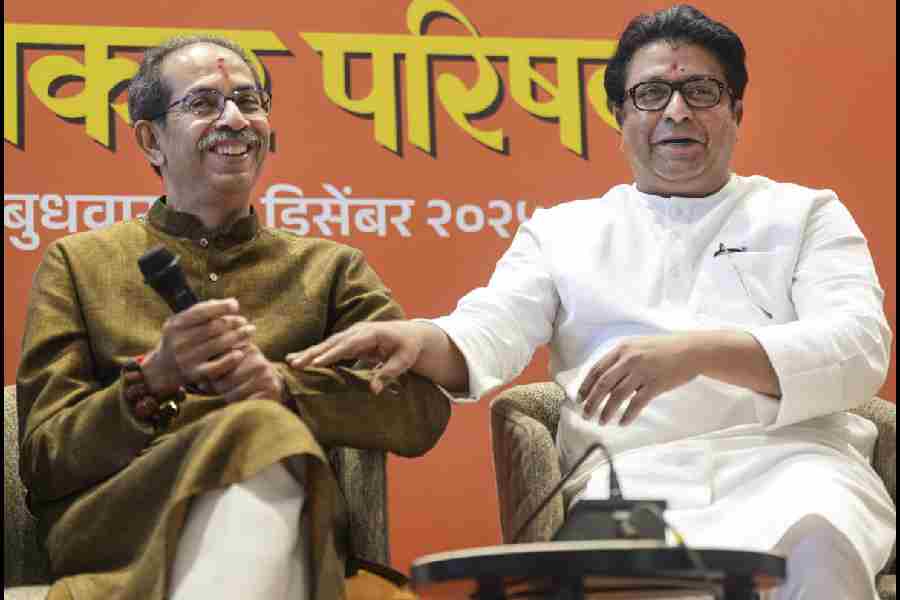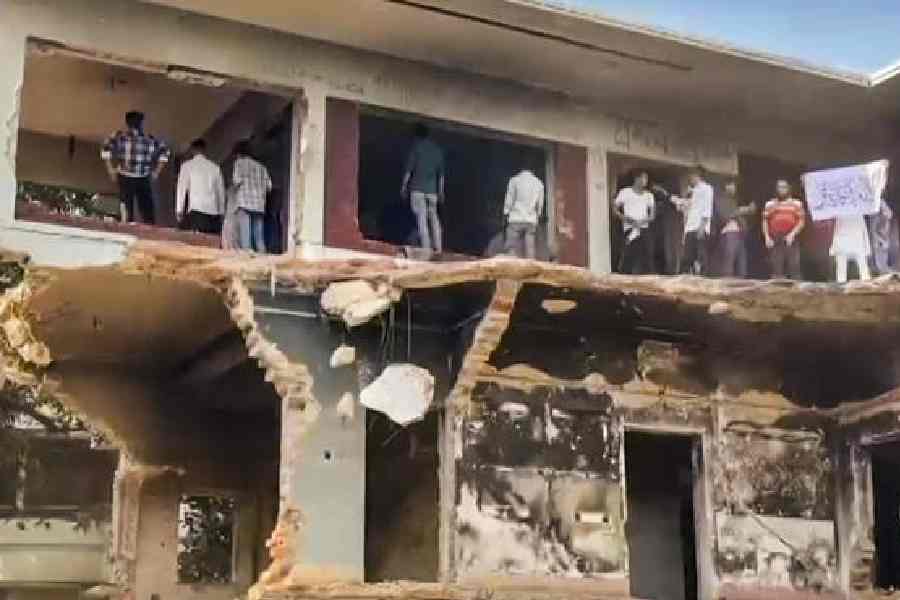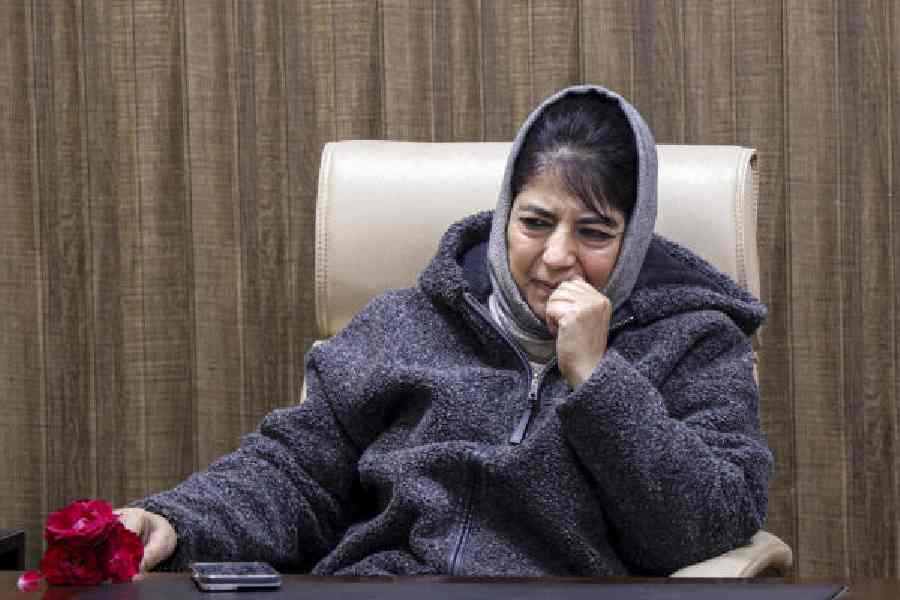 |
 |
| The Triangular Park house from where Sandesh was published; (above) the building in north Calcutta from where the PM Bagchi almanac was published. (Sayantan Ghosh) |
Two literary landmarks are about to be razed soon.The house in Triangular Park in south Calcutta and the one in Gulu Ostagar Lane in Darjipara in the north, from where children’s magazine Sandesh and the PM Bagchi almanac were published, respectively, will soon give way to blocks of flats.
The old PM Bagchi office is being demolished and the inhabitants of Sandeshbari are in the process of moving out so that it can be “developed”. Neither building figures on the Calcutta Municipal Corporation’s “heritage” list though both deserve inclusion, not for their architectural beauty but for their contribution to the Bengali literature.
The popular almanac and the children’s magazine, started by Upendrakishore Roychoudhury, will continue to be published.
Kishori Mohan Bagchi had established the firm, Darjipara Chemical Works, in 1883, those days in Kailashdas Lane, where he manufactured ink for writing. The venture became a roaring success and thereafter he constructed his house on Masjidbari Street.
It expanded and covered 26 cottahs, and by the end of the 19th century, hair oil and perfumeries were being manufactured from an adjacent building made of timber and with a tiled roof. But Bagchi could not promote his products meant for the “natives”. He started inserting advertisements in almanacs but was not pleased with the printing and display.
So Kishori Mohan started a printing press and began to publish the two-volume PM Bagchi Panjika Directory in the name of his father, Peary Mohan, from 1896, a tradition that is still alive.
Besides cosmetics, PM Bagchi specialised in making rubber stamps for photographers, physicians, clubs and the news agency Reuters.
The impressive list of PM Bagchi books included a translation of Kapalkundala in 1915, Harisadhan Mukhopadhyay’s Kolkata Sekaler O Ekaler, Purohit Darpan, Balmiki Ramayan, Kaliprasanna Sinha’s Mahabharat and Srimat Bhagbat. The firm manufactured toiletries till the 1970s, and 64 varieties of inks till the 1980s. The firm had to fold up following labour trouble but it will continue as a publishing house.
The demolition of the house in Triangular Park from where Sandesh began to be published in the 1960s will start next month. The house was constructed in 1938 by Arun Nath Chakrabarty, who belonged to the Bihar Civil Service and retired as district judge. He was the son-in-law of Upendrakishore Roychoudhury, who originally brought out this successful children’s magazine from Sukeas Street.
It later moved to his Garpar Road home in the early 20th century. It was printed at U Ray & Sons, and Sukumar Ray continued to publish it till his death in 1923. His second brother, Subinoy Ray, carried on for some time, but ultimately it folded up.
In May 1961, Satyajit Ray revived Sandesh, when it was edited by poet Subhas Mukhopadhyay. It was published from 172 Dharmatolla Street. Its production values and editorial quality were excellent but the overheads were too high. In 1963, the Sukumar Sahitya Samabay Samity, a cooperative society, was formed. It took over the magazine with Leela Majumdar, Sukumar Ray’s cousin, as its voluntary editor.
In 1964, the magazine moved into 172/3 Rashbehari Avenue at Triangular Park, with Nalini Das, an educationist and second daughter of Arun Nath Chakrabarty, as its de facto editor.
Besides being famous for Sandesh, many eminent persons such as Stephen Spender, MN Roy and Guenter Grass had visited this building. Sandesh is still being published with Sandip Ray as its editor and Amitananda Das, Nalini Das’s son, as its publisher. It is likely to be shifted to Satyajit Ray Park in Patuli.

